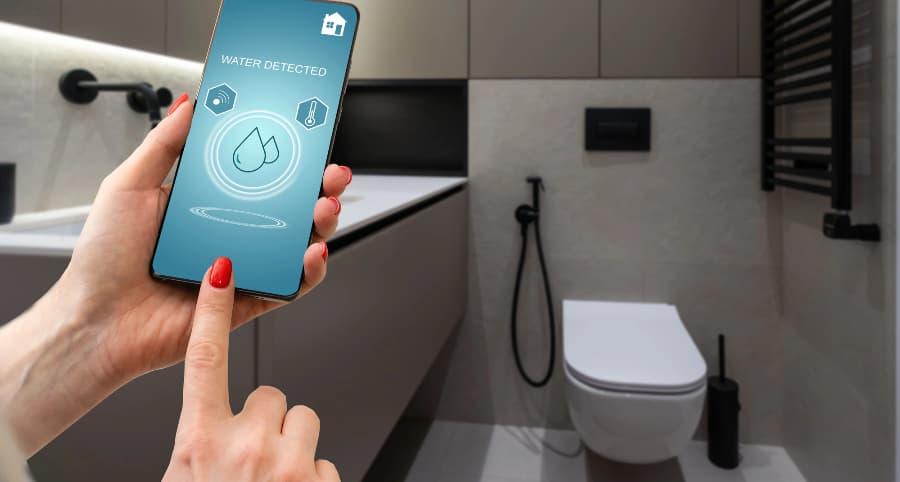How does a water sensor work and why use one with your Rochester smart home?

One tiny leak at your house can lead to major difficulties and thousands of dollars worth of damage. You must protect against this danger; fortunately, there’s a straightforward way to do so. A water sensor is an economical, simple, and effective solution. See how they work and why you should incorporate water sensors into your Rochester smart home.
How water sensors protect Rochester properties
Water enters homes in various ways, whether from a plumbing issue, weather-related incident, appliance malfunction, or simple human error. However it occurs, you need to know immediately, and this is where water sensors come in. But how do they really work?
Most water sensors are conductive and operate with two electrodes. When water invades the area between the electrodes, an electrical link is created, setting off your alarm. You’ll also discover capacitive sensors that emit an electrical field. When water touches the conductive areas of these devices, the field is interrupted, and your alarm activates. Optical sensors employing infrared LED light are an additional possibility.
Some water sensors give you more
Certain specialized water sensors provide even more defense as they have incorporated temperature sensors. This is an exceptional feature in preventing frozen pipes. If there’s a severe decrease in temperature, you’ll know immediately. Taking measures before pipes burst will shield you from water damage and exorbitant repair costs.
Why connect water sensors to your Rochester smart home?
When water issues arise, you must be notified immediately. You can achieve this objective by incorporating water sensors into your smart home. Whether you’re home to hear the alarm or somewhere else, you’ll get an instant update on your mobile device. As an additional backup, your 24/7 monitoring agents will be informed. Every moment is critical in a water emergency to limit the destruction and interruption to your family.
Where should you put water sensors?
Any location susceptible to flooding is an ideal place for water sensors. Consider installing in these areas:
- Bathrooms: Position next to tubs or behind toilets.
- Basements: Water commonly infiltrates basements through cracked walls or because of excess rain or faulty sump pumps.
- Next to water heaters or appliances: Any water-utilizing appliance might over time leak.
- Under sinks: Water sensors are perfect for detecting pipe leaks in areas not easy to see.
- Attics: Catch roof leaks quickly and avert expensive repairs.
Install water sensors with your Vivint smart home
Give your home the complete protection it needs with Vivint’s advanced devices. Our water sensors in Rochester link to your Vivint mobile app to send you instant updates whenever your alarm is triggered. You also benefit from incorporated temperature sensors to prevent pipe freezing. Explore the smart home components available in Rochester by calling (507) 710-3863 today.
